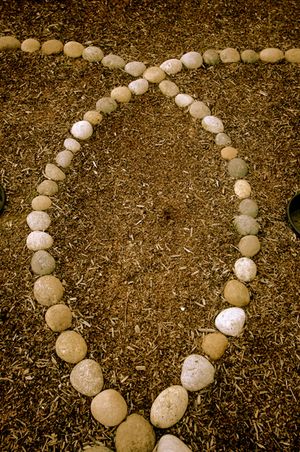 "When we join together the terms collective and wisdom, we reach a whole new synthesis of insight and revelation.
"When we join together the terms collective and wisdom, we reach a whole new synthesis of insight and revelation.
Like binocular vision, in which both eyes are used at once, joining collective with wisdom is a way of seeing with added dimension and depth. The collective eye can pick up patterns of order, variation, and connections; wisdom can detect meaning and human values that arise spontaneously from a particular situation. We achieve, to paraphrase the words of the psychiatrist Viktor Frankl, an ability to weave together the slender threads of a fractured whole into a firmer pattern of meaning.
To share collective wisdom with others is to make meaning from disparate threads and weave together a fresh understanding."
~ The Power of Collective Wisdom: And the Trap of Collective Folly


Your observation that many sets of eyes, working in unison, and drawing from collective experience, can clarify our vision, brought to mind a recent show I had watched about astronomy, in which arrays of devices (CCDs) are being used to peer into the depths of space. This technique, used on the Hubble Space Telescope, can compensate for disturbances in the atmosphere, vastly improving Earth-based telescopes. When we look together, as the ancients did at the night sky, we can arrive at agreed upon patterns in the chaos that can sustain us, carrying us through the winters of our discontent.
http://en.wikipedia.org/wiki/Charge-coupled_device#Use_in_astronomy
My goodness Michael, these are wonderful metaphors for the passage – the physical analogy of the Hubble space craft’s capacity to peer into the depths of space and the ancients who pondered together the meaning of patterns they discoved in the night sky. What an inspried way to imagine our capacity to also peer into the depths of the collective.
Speaking of images, the image that jumps out to me is the almond-shaped mandorla. It is often used to symbolize the Womb of God in Christian iconography, with either Mary or Jesus in the center, one representing the personification, the other the fruit. Then again, the picture is framed such that another Christian symbol is revealed, the Vesica Piscis, the Fish. According to one Greek myth, Pisces represents the fish into which Aphrodite and her son Eros transformed in order to escape the fire god Typhon. Funny how another Mother/Son pair is associated with this image, and that they too embody Love, and escape from conflageration.
In a more universal context it symbolizes the union of opposites, the opening of a portal between worlds, a common ground, a place of mediation, or a liminal space, a threshold. I also like that the stones are placed upon the earth, our common ground, and that the stones have separations, indicative of a pair of permeable membranes. We have a lot to work with here.
http://www.mandorla.com/context/what.html
http://www.kyrie.com/symbols/mandorla.htm
This is a great summary of the mandorla symbol and the reason why I used it here. I shot this image on the land of my colleagues, Bill and Marilyn Veltrop, who had two overlapping circles sculpted in stone and placed in the land behind their home. It is a powerful symbol of our capacity to find overlapping territory and sacred space, and as you say, a liminal space and portal into other worlds.